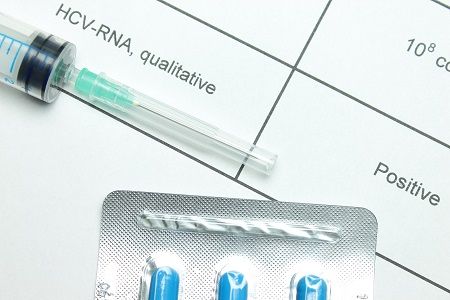Article
WHO Prequalifies Its First Hepatitis C Rapid Diagnostic Test
Author(s):
The few hepatitis C rapid tests available now are either too expensive or lack quality – posing problems for extensive distribution.

The World Health Organization (WHO) has prequalified the first hepatitis C (HCV) rapid diagnostic test, a statement announced on December 5.
The test, SD BIOLINE HCV, is indicated for adults and particularly beneficial for low- and middle-income countries because it’s a point-of-care diagnostic (or “bedside testing”). It was developed by the South Korean company, Standard Diagnostics, Inc., and resembles a pregnancy test.
“The majority of people with chronic hepatitis C don’t know they have the infection and miss the opportunity to be cured,” said Gottfried Hirnschall, WHO director for the Department of HIV and Global Hepatitis Programme.
This isn’t the first HCV rapid test on the market, however, this is the first one the WHO is behind. The few rapid tests available now are either too expensive or lack quality — posing problems for extensive distribution. The SD BIOLINE HCV is expected to be more affordable and reduce the chances for a misdiagnosis.
So how does the test work? The rapid assay detects HCV antibodies using human serum, plasma, or whole blood. Healthcare personnel don’t need extensive training to perform the test and it doesn’t require electricity or hospital facility. In five to 20 minutes, the test provides visually-read results — meaning that additional equipment isn’t need to interpret results. However, the test indicates reactive specimens, so further testing is needed to determine current infection.
“One of the chief obstacles to effective testing and treatment of HCV has been a lack of suitable diagnostic tests, with the result that only a small minority of people infected with HCV are aware of their status. We are therefore greatly encouraged by the news that a WHO-prequalified rapid diagnostic test for HCV can now be made available to those most in need,” explained Lelio Marmora, executive director of UNITAID.
Making diagnoses remains a challenge across the board for infectious diseases. Unlike HCV, the human immunodeficiency virus (HIV) isn’t curable as of now. So detecting the virus early on to ensure the best patient outcome possible is crucial. In November 2016, researchers from Imperial College London and DNA Electronics developed a USB diagnostic for HIV that also provides results within 20 minutes.
WHO pointed out that this HCV test comes at a key time since low- and middle-income countries are gaining more access to highly effective direct acting antivirals (DAAs) — due to improved costs and availability.
So what does it mean that this test is “prequalified”? WHO officials made the decision in accordance with international standards on quality, safety, and performance. When a product gets to this level, it’s eligible to be acquired by United Nations agencies.
“Making the first WHO prequalified test available in countries can greatly contribute to achieving the goal of eliminating hepatitis,” Hirnschall concluded.
The WHO’s full statement on the SD BIOLINE HCV can be found here.
Related Coverage:
Breakdown of Hepatitis C Genotype Distribution Around the World
Hepatitis C Damage Doesn’t Stop at the Liver, Renal Failure Risk Seen
Hepatitis C: Bronx Program Keeps Former Prison Inmates in Treatment





